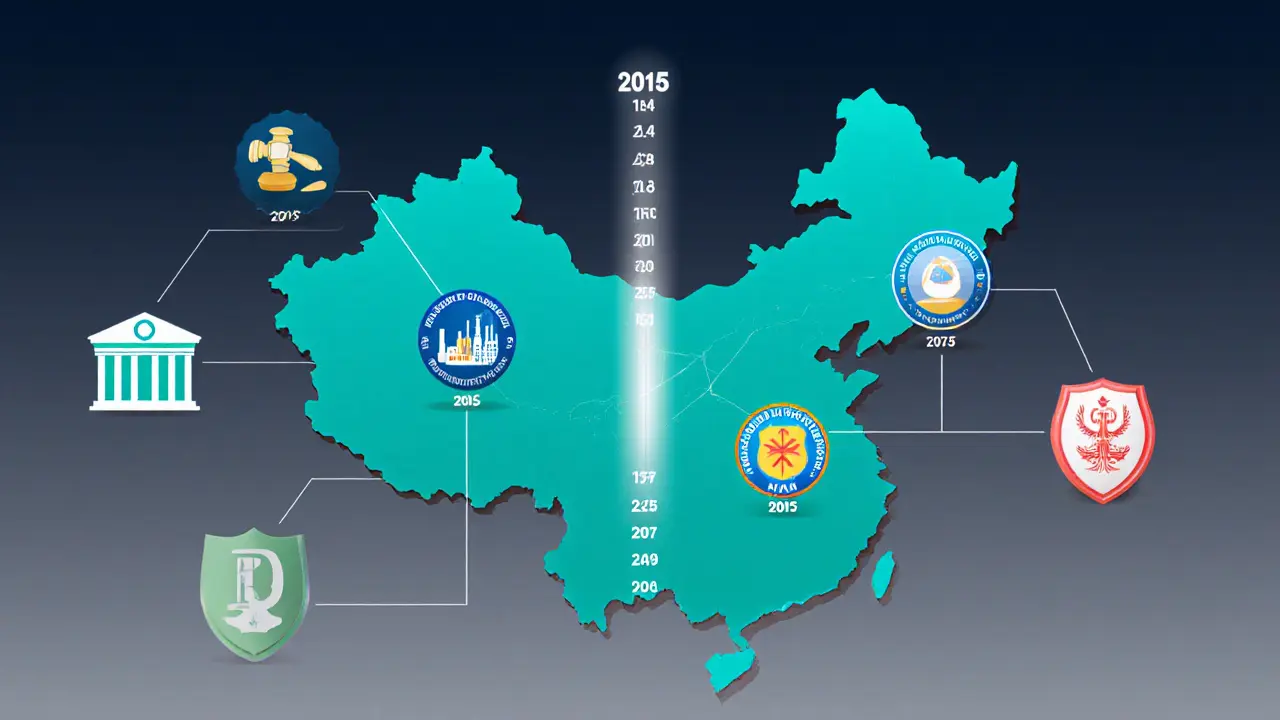Crypto Mining China
When you hear the phrase crypto mining China, you’re looking at the massive, often hidden, operation that extracts Bitcoin and other proof‑of‑work coins inside Chinese borders. Also known as Chinese mining industry, it grew quickly after 2015 thanks to cheap power, abundant hardware, and a tech‑savvy workforce. The country once accounted for more than 60% of the global Bitcoin hash rate, and its mining farms—ranging from repurposed warehouses in Inner Mongolia to high‑rise rooftops in Sichuan—became a defining part of the crypto ecosystem. Understanding this landscape helps anyone tracking market moves, policy shifts, or environmental impact.
One of the core pieces of the puzzle is Bitcoin mining, the process of solving cryptographic puzzles to add new blocks to the blockchain. It relies on the hash rate, the total computing power dedicated to mining across the network. In China, the hash rate surged when regional subsidies lowered electricity costs to as little as $0.02 per kWh. Those low rates made large‑scale operations financially viable, pushing the global difficulty upward. At the same time, regulation started to influence the scene: provincial bans, central government crackdowns, and new licensing requirements forced many farms to relocate or shut down. The interplay of hash rate, electricity costs, and regulation creates a dynamic where each factor shapes the others—higher hash rate drives up difficulty, which in turn raises electricity consumption, prompting tighter regulation.
Beyond the raw numbers, the environment and policy climate add layers of complexity. Mining farms consume a staggering amount of power, often tapping into coal‑heavy grids, which raises concerns about carbon emissions. In response, some operators have experimented with renewable sources—hydropower in Yunnan, solar farms in Xinjiang—to shave off both cost and public criticism. Meanwhile, the 2021 crackdown that banned new mining licenses and ordered existing sites to cease operation reshaped the industry overnight. Many miners moved equipment to Kazakhstan, the United States, or turned to cloud‑based hash power services. This migration illustrates a key semantic relationship: regulation influences electricity costs for mining farms, and those costs dictate where hash rate can be sustained. The shift also sparked a wave of innovation, with Chinese entrepreneurs developing more efficient ASICs that can run on lower‑voltage power supplies, helping the remaining domestic farms stay competitive.
All of these factors—the sheer scale of crypto mining China, the push‑pull between hash rate and electricity pricing, and the ever‑evolving regulatory environment—shape a story that’s still being written. Below you’ll find a curated set of articles that dive deeper into licensing guides, token analyses, exchange reviews, and technical tutorials. Whether you’re a beginner trying to grasp the basics of mining economics or an experienced trader looking for the latest regulatory updates, the collection offers actionable insights that reflect the current state of China’s mining sector and its ripple effects across the global crypto market.

China’s Crypto Mining Ban: Laws, Restrictions & Impact
Apr 24, 2025, Posted by Ronan Caverly
An up‑to‑date look at China's crypto mining ban, covering legal status, enforcement agencies, reasons behind the crackdown, and its global impact.
MORESEARCH HERE
Categories
TAGS
- decentralized exchange
- crypto exchange review
- cryptocurrency
- crypto coin
- CoinMarketCap airdrop
- smart contracts
- tokenomics
- cryptocurrency exchange safety
- crypto exchange
- cryptocurrency airdrop
- crypto airdrop
- cryptocurrency exchange
- crypto airdrop guide
- blockchain token distribution
- DeFi
- crypto exchange scam
- crypto airdrop 2025
- Ethereum
- cross-chain interoperability
- ERC-20
